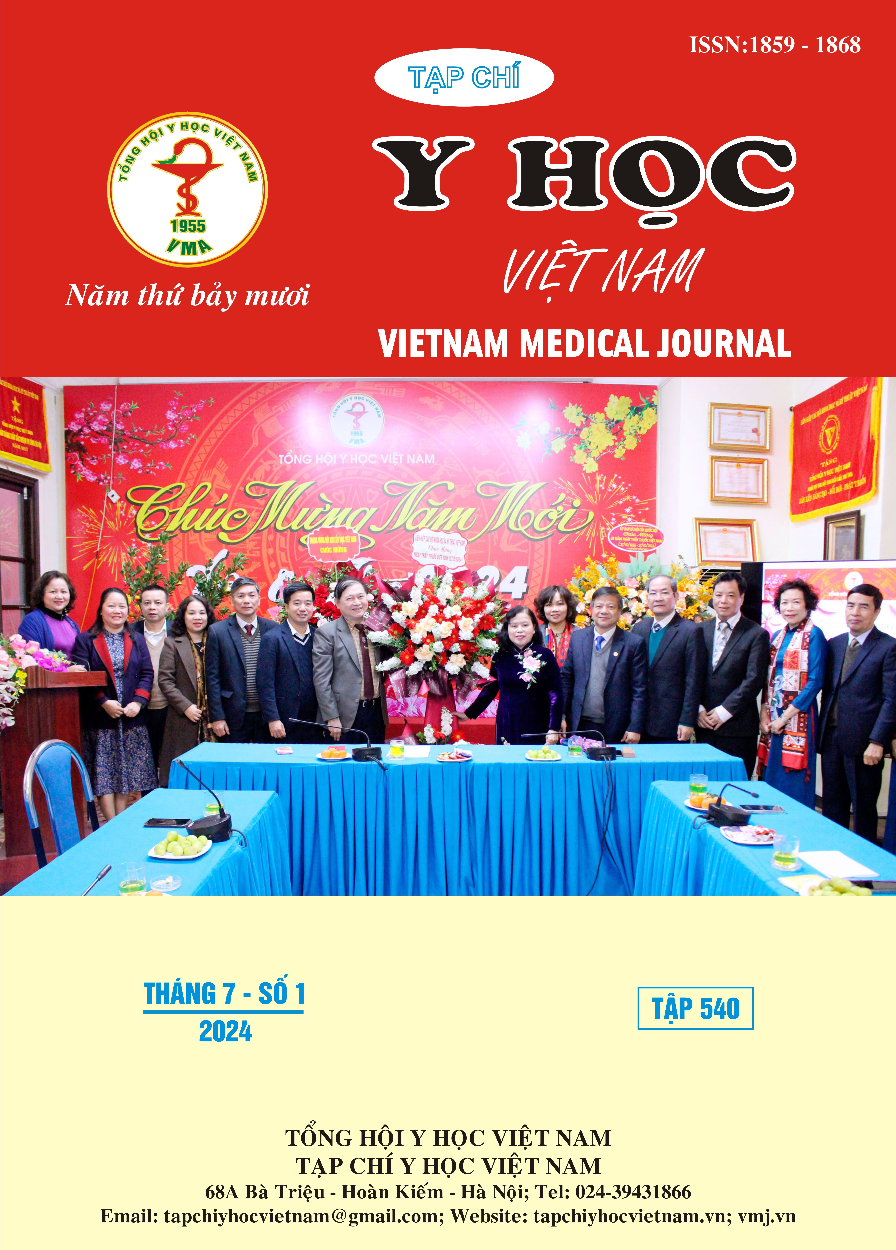CHRONIC CONTAINED RUPTURE OF ABDOMINAL AORTIC ANEURYSM WITH AORTOCAVAL FISTULA: A CASE REPORT
Main Article Content
Abstract
Background: Complications of ruptured abdominal aortic aneurysm is a severe condition that is often the leading cause of death. Rarely, the formation of retroperitoneal hematoma may be encircled by the surrounding anatomical structures, which may halt the bleeding and cause a prolonged, chronic condition called "Chronic contained rupture of abdominal aortic aneurysm" (CCR-AAA). In contrast to the classic rupture, CCR-AAA does not present with symptoms of hypovolemic shock; vague abdominal or back pain is common, as are other symptoms of aortic aneurysm in general. On the other hand, clinical symptoms of Aortocaval fistula depend on the flow rate of the shunt. The diagnosis and treatment become challenging when a patient has both rare CCR-AAA and Aortocaval fistula conditions. Methods: A rare case report. Clinical case: A 68-year-old male patient presented with lower back pain, fatigue, dry cough, dizziness, and chest pain. He was treated at the Rheumatology and Respiratory department before undergoing abdomen computed tomography (CT) and being diagnosed with CCR-AAA with accompanying Aortocaval fistula. The operation was performed successfully by closing the shunt and replacing the abdominal aortic aneurysm with a prosthetic graft. Conclusion: CCR-AAA with small Aortocaval fistula is a rare clinical condition that can coincide in a patient. The clinical symptoms are not typical and can be challenging to diagnose. CT with contrast enhancement is the gold standard for diagnosing both conditions. Surgical treatment should be performed early to prevent life-threatening complications of further rupture.
Article Details
Keywords
abdominal aortic aneurysm (AAA), chronic contained ruptured abdominal aortic aneurysm (CCR-AAA), Aortocaval fistula.
References
2. Davidović L.B., Lotina S.I., Cinara I.S., et al. (1998). Chronic rupture of abdominal aortic aneurysms. Srp Arh Celok Lek, 126(5–6), 177–182.
3. Booth M.I. and Galland R.B. (2002). Chronic Contained Rupture of an Abdominal Aortic Aneurysm: a Case Report and Review of the Literature. EJVES Extra, 3(2), 33–35.
4. Nguyen T.-T., Le N.-T., and Doan Q.-H. (2019). Chronic contained abdominal aortic aneurysm rupture causing vertebral erosion. Asian Cardiovasc Thorac Ann, 27(1), 33–35.
5. Halliday K.E. and al-Kutoubi A. (1996). Draped aorta: CT sign of contained leak of aortic aneurysms. Radiology, 199(1), 41–43.
6. Psathas E.D., Lioudaki S., Doulaptsis M., et al. (2012). Clinical Manifestations of Aortocaval Fistulas in Ruptured Abdominal Aortic Aneurysm: Report of Two Cases. Case Reports in Surgery, 2012, e123081.
7. Tsolakis J.A., Papadoulas S., Kakkos S.K., et al. (1999). Aortocaval Fistula in Ruptured Aneurysms. European Journal of Vascular and Endovascular Surgery, 17(5), 390–393.
8. Guzzardi G., Fossaceca R., Divenuto I., et al. (2010). Endovascular Treatment of Ruptured Abdominal Aortic Aneurysm with Aortocaval Fistula. Cardiovasc Intervent Radiol, 33(4), 853–856.


